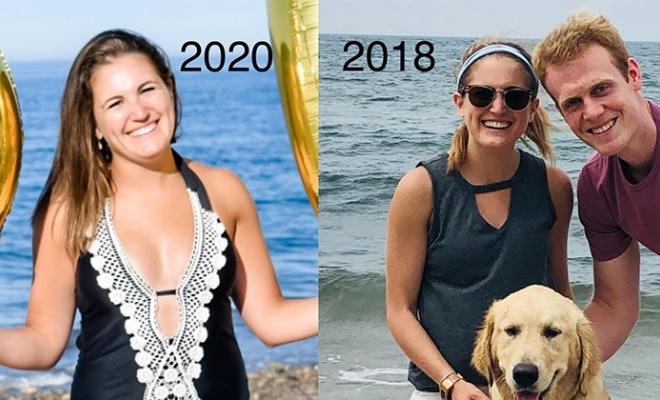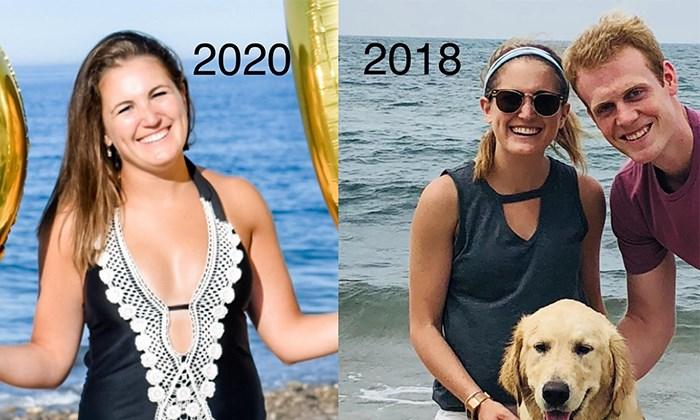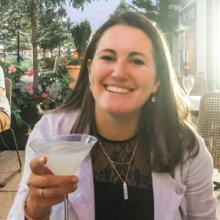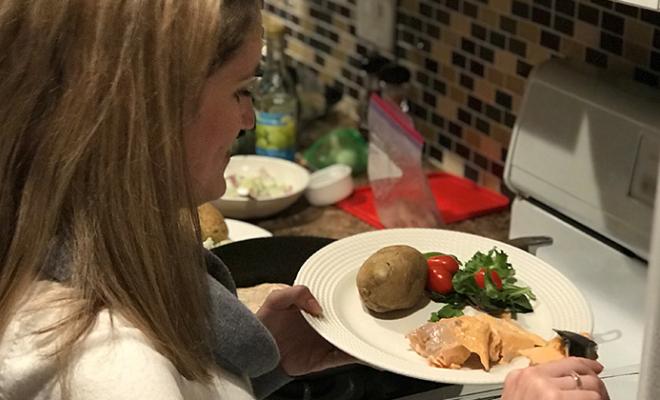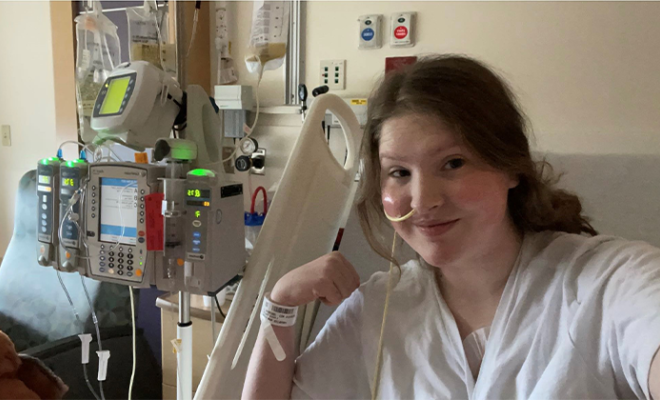All my life with cystic fibrosis, I had always been told to eat more fat, more calories, and more food in general. Life was a never-ending battle to keep the pounds on. When I got sick, the first symptom was a loss in appetite and, soon, the pounds would shed off me like a snowman melting in spring. No matter what I ate -- McDonald's chicken nuggets with a quarter pounder, ice cream, cookies, candy, pizza - I remained at a constant range of 100-110 pounds soaking wet.
Whenever anyone lamented about how fat they were and commented that they wished they could eat anything they wanted and stay trim like me, I always cringed inside. I thought, “You wouldn't say that if you knew what it was like.” I hated my skinny arms, wide rib cage, bony butt, and distended belly. I hated that unless something was an extra small petite, it would hang off my body in all the wrong places. I longed for a butt to hold up my pants, for sculpted arms, and for my jeans to hug non-existent curves.
Soon, I started taking Orkambi®, then Symdeko®, and with each new drug came its own weight milestones. Suddenly, my jeans started filling out, and my belts collected dust in my closet. And once I started Trikafta®, my weight left the teens, creeping up to 120 ... then 125. Suddenly, I was at a healthy weight for my 5 feet.
After years of struggling to gain weight, one would think that reaching this new milestone would be met with appreciation and celebration. But American society celebrates thinness. People stopped commenting about my weight -- finally -- but as I scrolled Instagram and TikTok with influencers in their crop tops and yoga pants, I longed for a time when my body met those standards. In the mirror, I noticed rolls and cellulite for the first time.
I had the butt to hold up my pants, the curves to fill out my jeans, the arms that were no longer stick thin, yet I was still unhappy.
Suddenly, I was the person lamenting about my weight. I started tracking my calories, even embarked on a 1,200-calorie diet in an attempt to lose a few pounds. I can't count the number of “before” pictures I have of myself before embarking on a new workout regimen and eating plan. Soon I would get too hungry, fall off the wagon, and go back to my old ways -- eating whatever I wanted like I had been eating all my life, binging on entire bags of candy or chips -- and the scale would go back up.
One day on TikTok, I discovered a registered dietitian who preaches about intuitive eating, a lifestyle founded on the premise that something like 95 percent of diets fail and result in people gaining back the weight or gaining back even more than they lost. Intuitive eating encourages you to give yourself unconditional permission to eat what you desire when you're hungry and stop when you're full. It stresses the importance of moving your body in a way that you enjoy, nourishing your body with gentle nutrition, and loving your body for all it does for you, regardless of its size. At first, I was skeptical. Isn't it unhealthy to just eat whatever you want? Surely, I would eat McDonald's for every meal if that were the case.
I soon found myself following more people on social media who had adopted intuitive eating. They seemed so confident, so enlightened, and so free from the clutches of diet culture, which I had only begun to dip my toe into and was already causing me so much distress, not to mention hanger. When I talked to my therapist about my newfound disdain for my body, she encouraged me to read the book, “Intuitive Eating.” Maybe, she said, it could help me to have a more neutral relationship with my new body size.
Reading “Intuitive Eating” and its related workbook opened up a world of possibilities for me.
Every free moment was spent inhaling this new gospel. Suddenly, food wasn't something to be feared but embraced.
Usually, I avoided buying what I used to call “junk food” like chocolate, chips, and ice cream because I didn't think I had the self-control to avoid binging on it. Armed with my new principles, I bought a bag of Ghirardelli caramel squares. To my delight, I could eat just one a day and be satisfied, leaving me plenty to enjoy for a couple of weeks. And on the days I wanted more than one, I ate it with zero guilt. (Although this way of eating worked for me, I encourage you to talk to your care team before trying a new diet.)
I learned which foods make me feel alert and energized, which foods fueled my runs and workouts, and which made me drool with enjoyment. I unfollowed any influencer that sent me into a comparison trap and found body-positive women who embraced their imperfections, dancing around in crop tops with bellies that looked like mine. I stopped trying to squeeze into my extra small clothing, donated much of it, and ordered new clothes that fit and flattered my new body.
It hasn't all been easy. I still glimpse at my larger belly in photos and when I look in the mirror, I find myself dreaming of a flatter stomach. Intuitive eating encourages you to throw away your scale but years of obsessing about the number on the scale has made it difficult. Although I'm not tracking calories anymore, I still find myself doing mental calculations after a day of eating. Sometimes the TikTok algorithm sneaks diet culture posts onto my feed and thoughts of cutting back my calories creep back.
But, unlike diets, intuitive eating isn't a process that demands perfection. Every day I learn something new about myself and make steps toward appreciating my new body. And no, I don't eat McDonald's every day!
The other day, a memory came up on my Apple Photos with a picture of myself from a past summer wearing a tank top and shorts. I was alarmed at how small I was all over -- my face, my legs, my arms, my belly, which I probably thought stuck out too much that day. An onlooker probably didn't know what was going on inside my body, but all I could see in that photo was a person suffering with CF. In that moment, I realized how much I have to be thankful for, as I am not struggling with CF anymore, and my body represents that. This was my before picture, before Trikafta, before strength, before control over my life, before newfound health, before a larger, more nourished body. I realized then that there's no reason to strive for that skinny body anymore. I am so grateful for the health my new body represents, thanks to everything I've learned through intuitive eating.
Interested in sharing your story? The CF Community Blog wants to hear from you.

